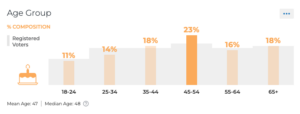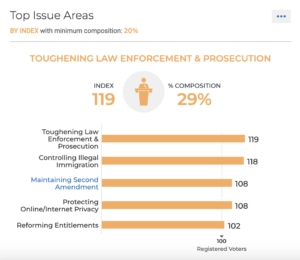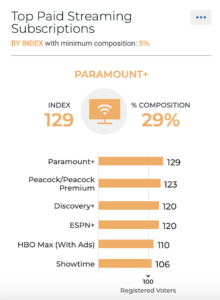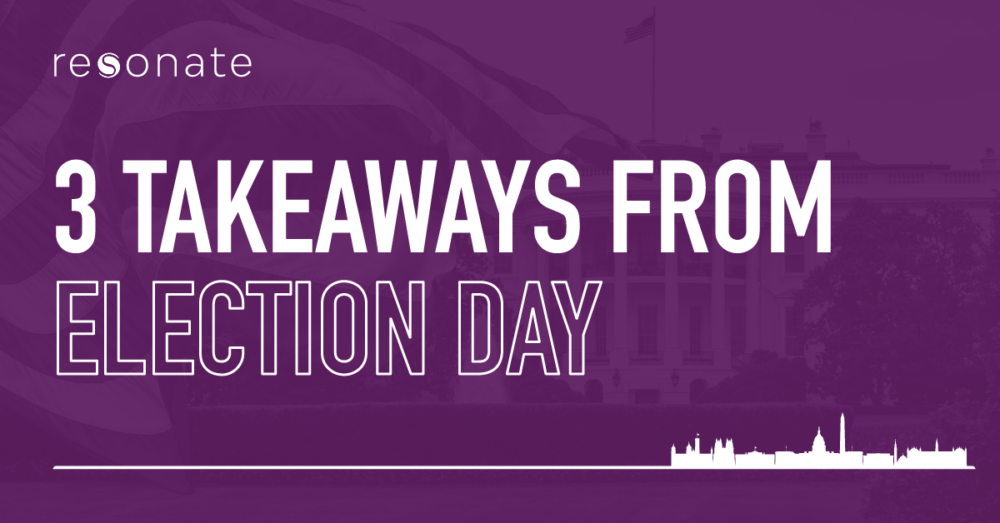Yesterday’s election surprised some people — and those people were the campaigners who’ve been relying on traditional polling and hard party lines to target their voters. The landscape of American politics has been turned on its head. You know that. But this election was a hard reality check for many candidates, particularly those who relied on steadfast party issues to target voters, hoping they’d turn up to the polls as they always do.
From youth voters to Republican fragmentation and the dissolution of party-first voters, here are three takeaways and the AI-driven data approach you need to take with you into the primaries and 2024.
The Youth Movement is Breaking Through
The youth are voting. Our data indicates 25% of young voters, defined as voters under 35, are excited to vote in next year’s election. In the coming days, we’ll find out what those numbers looked like this year and how they played a role in the Democratic wins. One thing is for sure, the youth movement matters and the winning party in 2024 will be the one that is able to reach them.

When traditional data looks at voting history, it misses this critical segment. Their history doesn’t matter — they didn’t necessarily vote in the last election. What matters is their intent and excitement headed to the polls. And when you consider polling data, that also neglects to take this segment into account. They don’t answer polls in the same way that older voters do. Not taking their beliefs, values, and political leanings into account means advertising and outreach is missing the mark. They care about core issues like Toughening Law Enforcement & Prosecution and Controlling Illegal Immigration, and they’re more likely to vote based on issue than on party lines than previous generations.

To get an idea of what these youth voters look like, we pulled an audience of younger voters that are excited to vote in the 2024 election. This is a segment that should be on your radar as we barrel towards 2024.
Republican Fragmentation is Going to Rock the Party
Last night showed that Republicans are missing the mark. They’re targeting the wrong people with the right message, and do not have a grasp on where their formerly core voters now stand.
The losses in Virginia last night were a direct result of the fragmentation in the party. On one hand, you have the MAGA contingent that the party has worked hard to court. There are the older voters who are glued to broadcast TV. There are the traditional, small government republicans. Younger Republicans also exist, despite what the media may report, and they could be engaged enough to cast a ballot, if they’re not alienated. You’ll need to target them where they’re watching, like Connected TV (CTV), where they are more likely to be watching Paramount+, Peacock, and Discovery+ to name a few.

Another group is the Suburban moms. Right now, that group is scared of what the future looks like, but they’re weighing their options. They’re torn between school issues regarding parental involvement and abortion restrictions. For now, they’re choosing to vote for abortion rights. The messaging coming out of the Republican party shows that they completely miscalculated where their base stood on this issue.
AI-driven data models within Resonate would have shown Republican campaigners that this disconnect existed. Resonate can take any polling data and determine where you need to target and where the voters actually stand. People are complicated, fragmented — and, right now, the Republican party is feeling that impact.
A Party-First Mentality Isn’t Going to Cut It
Expanding on the Republican Party’s growing pains, it’s time to let go of the party-first mentality on both sides. People are torn on the issues and candidates no longer line up with the traditional views of Republicans and Democrats.
If you live in a highly contested state, what did your commercial breaks look like this fall? While you were trying to binge watch your favorite show, how many times were you interrupted by a political ad — and how many times was it from the other side?
Those ads do get people to vote, and sometimes that vote is because the ad motivated them to stop what they believe to be a problematic candidate. Part of your targeting strategy needs to be avoiding a situation where you’re flaming the opposition. You need to target your audience to get out the vote while also hitting persuadables with a strong message. And this isn’t always done based on party lines. You have to target based on values-based, issue-based segments; it’s not as simple as how they registered.
At Resonate, we have the ability to target people who intend to vote based on how they’ll vote rather than voting history or party affiliation exclusively. This is not a stable election. The traditional way of targeting does not work. Real-time AI-powered insights are the only way to reach your top voters now.
Categorized as: Blog Page, News & Press, In the News, Politics & Advocacy


